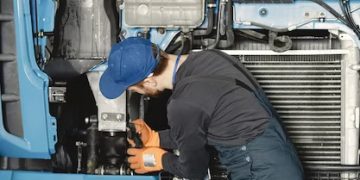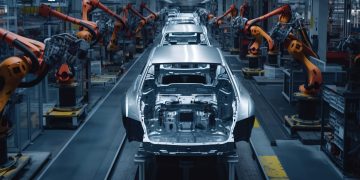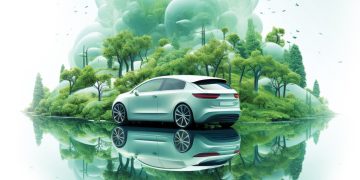India is poised to soar, much higher than several fast-growing large economies over the next decade. Concurrently, the automotive industry in the country aspires to achieve global eminence. Growth indicators paint a portrait of optimism for India as it emerged as the world’s fifth-largest economy and will become a USD 4.7 tn economy by 2023. Anticipation of a growing consumer class, ease of doing business, and expanding infrastructure are favorable factors propelling the country forward and India’s automobile industry with it.
Research conducted by Berkeley National Laboratory and UCLA stated, ‘India has the potential to dominate the global production of electric vehicles’. The study further underlines that transitioning from petrol & diesel-fuelled to electric-charged vehicles, especially trucks, after successful bikes and consumer cars, will enable the country to meet the net zero greenhouse gas emissions goal by 2070.
India is hugely dependent on other countries for its oil consumption, as it imports more than 80% of its oil requirements. Moreover, India has 27.81 Cr of fuel-powered vehicles, while electric vehicles stand at 13.34 lakh. Therefore the automotive industry transitioning to electrically fuelled vehicles will help reduce its dependence on imported oil, improve air quality and the environment, and aid in attaining the goal of net zero carbon emissions.
The New Data-driven EV Tools
An assortment of new design tools is centered towards reducing the time and resources required to create technical documentation. Innovative and advanced examples can reuse data directly from upstream engineering processes, bypassing the engineers’ need to collect data from a spreadsheet and manually redraw wiring diagrams. Instead, all the essential data can be imported and axiomatically laid out into accurate wiring diagrams.
The technical publications department would have manually gathered the necessary data, who would also have drawn the schematics and verified that the wiring data matched the engineering data. Instead, engineers may now configure the automated creation of electrical documentation. The customisable engine consumes design data, 3-D models, location views, repair instructions, diagnostic codes, and corporate assets like symbol libraries and graphical styles. Then engineers may extract and link related data, reorganise diagrams, change the appearance of the documentation, and even export to various formats, including PDF, HTML, and S1000D.
Engineers can ensure the accuracy of the information in the service documentation using the EV harness design data directly. The intricacy of autonomous vehicle systems and the propagating constraints of high-voltage wiring has made it essential. In addition, as vehicles become more electrified and autonomous, after-sales service and maintenance only become more critical.
With advanced electrical systems engineering solutions and the challenges Ev’s new technology created, automotive companies can equip service technicians with the necessary tools to overcome the difficulties of maintaining such vehicles.
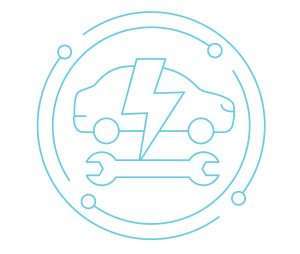
Tools
A tool can be any item that is used to achieve a goal. Equipment usually denotes a set of tools used to perform a specific objective. A tool can be non-mechanical as well. However, for the word equipment, there is a specific mechanical aspect that cannot be ignored.
Automotive tools have been created to quickly fabricate automotive repairs, modifications and servicing, making them essential for use when working on vehicles. With the right tools, you will find it easier to complete the tasks you need to perform without errors or delays. So it is because automotive tools can help solve almost every issue if appropriately coupled with the right equipment and skills. Every automotive mechanic or technician possesses a reliable set of essential tools to service their cars or serve their clients.
Tools for the Electric Vehicles in the ToolBoxes:
Torque Wrench
A torque wrench is an expensive tool, but it helps explicitly apply a specific “torque” to a nut or bolt. In addition, it uses a unique internal mechanism to make turning calculations exact, preventing one from over-tightening or even breaking bolts.
Axle Tool
The new and innovative axle tool has all the most common sizes used in front axles all in one place. It is used to remove the bike’s especially sports bike front wheels.
Impact Driver
To get into internal modifications or check the inner parts of the bike, one needs an impact driver for the same. Impact drivers make your efforts much more efficient.
Multimeter
A multimeter is a vital part of the mechanics’ arsenal. From troubleshooting electrical shorts to testing the battery’s voltage, a multimeter is very savvy. Invest in a basic one and ensure it has – DC voltage, continuity, and resistance reader.
Socket or Ratchet Set
The socket or ratchet set are valuable tools to remove lug nuts, bolts and various mechanical needs. An adjustable ratchet with reversible, self-locking, or quick-release ratchets with imperial and metric sockets can help operate on every vehicle irrespective of its make, size and model.
Motorcycle Paddock Stand
A paddock stand is a must have tool to make the bike stand upright in a stable condition to carry out tasks such as cleaning and lubing the chain.
Impact Wrench
Impact wrenches are handheld power tools shaped like a drill or impact drivers. They have wrench sockets attached to their tips for loosening stubborn bolts.
Battery Analyzer
Another tool worth stocking in the toolkit is a 12-volt battery analyzer device. The handheld machine provides information about the battery’s voltage and other important analytics, including the charge and rating.
Battery Booster
Instead of carrying a set of booster cables, a battery booster is a much better choice. It comes with two gripper clamps that hook onto your battery terminals. One charge provides enough juice to jump your battery several times.
Collection of Pliers
Collection of Pliers
Used for loosening and tightening nuts, the pliers include a pair of slip-lock pliers that adjust for gripping objects of different sizes; needle-nose pliers for gripping small, thin objects in hard-to-reach places; standard pliers; and wire cutters.
These tools in the toolbox eventually turn out to be of great help when the car or bike breaks down in the land of nowhere, especially on highways or hinterlands where the chances of availability of the services are absolutely nil.
Maintenance Tools
Maintenance Tools
Electric vehicles, including cars and two-wheelers, need less maintenance, but some components of e-vehicles still require special care.
The first and foremost importance is the battery, the primary powerhouse of an EV, and ensuring it is functioning well is the most crucial task for an EV owner. Battery care involves how the battery is charged and its storage conditions. With time, the battery drains, signifying it cannot charge to its fullest capacity. Therefore, recording the time to charge and discharge will help maintain the battery pack.
Secondly, always use the right charger and charge the battery at the correct voltage and do not overcharge it, as that also reduces its life. Some EVs get a vacation mode for extended storage or unused periods but unplugging the batteries works better.
Lastly, the weather and temperature conditions also play a vital role in the health of your battery pack. As the EV owner has all the details about the maintenance and battery care provided in the manual, following it would yield good results.
Regularly check the power accessories, charger, AC, the power inverter, visually check for fluid leaks, and inspect the brakes for any wear and tear. In addition, regular lubricating and oiling of the engine and mechanical parts and maintaining the car fluids can enhance the life of the vehicles.
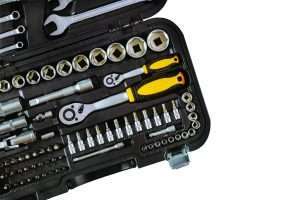
Challenges with EVs
The automotive service and maintenance sector is rapidly evolving in response to the development and growth of electric and autonomous vehicles. For example, electric motors that are less complex require much less maintenance as compared to internal combustion engines. However, vehicle complexity has continued to increase as vehicles’ electrical and electronic systems become more extensive, sophisticated, and crucial to vehicle functionality.
With automated driving systems, a dense, thick network of processing units and sensors to perceive the driving environment and channel instructions to vehicle sub-systems. However, a unique and intricate set of electric and autonomous vehicle challenges requires special training or bespoke processes to manage the service environment
With automated driving systems, a dense, thick network of processing units and sensors to perceive the driving environment and channel instructions to vehicle sub-systems. However, a unique and intricate set of electric and autonomous vehicle challenges requires special training or bespoke processes to manage the service environment
Extremely high-voltage wiring is needed to transmit power to the electric motors and other vital systems from the batteries by the electric powertrains. As a result, vehicle design, manufacturing, and workshop procedures must adapt to heightened safety needs. Various manufacturers have integrated safety mechanisms and adopted ‘safety by design, including a short circuit and isolation monitoring and high-voltage interlock loop into the design of the high-voltage wiring and systems.
High-voltage vehicles are separated into dedicated bays due to the possible dangers of the high-voltage electrical distribution system or damaged batteries. Therefore, specialised training with appropriate protective kits for the person manufacturing or repairing the vehicle is provided to insulate themselves.
Maintenance of Autonomous Vehicle
Autonomous vehicle servicing and repairs are essential to ensure their continued safe and reliable performance. Therefore, it is imperative to identify faults accurately by the technician and prescribe the correct solutions for the automobiles under inspection. Moving to autonomous vehicle service requires a non-linear increase in technician skills, as autonomous service technicians will inspect and service the network connectivity inside the vehicle. These new networks and E/E architectures are evolving and introducing new technologies requiring new approaches.
The G-6overnment’s Initiatives
The Government, on their behalf, is leaving no stone unturned to boost the EV industry within its national borders and abroad. Phase II of the FAME India Scheme is being implemented for five years starting April 2019 with total budgetary support of ` 10,000 Cr.
Electric vehicles are covered under the Production Linked Incentive (PLI- manufacturing of
Advanced Chemistry Cell to bring down the battery price) scheme for Automobile and Auto Components, approved on 15th September 2021 with a budget of ` 25,938 Cr for five years.
GST on electric vehicles and their charging stations has been considerably reduced to 5% from 12% and 15%, respectively.
GST on electric vehicles and their charging stations has been considerably reduced to 5% from 12% and 15%, respectively.
The Ministry of Road Transport & Highways announced an exemption from permits, and a proposal to waive road tax is under consideration for the electric wheel owners.
Summing Up
Enormous opportunities await on the back of India’s expected solid economic progress in
the future years. However, these opportunities are conditional to the automotive industry embarking on many changes. Therefore, making the most of the available options could help the auto industry of India leap forward to achieve global eminence.
M S Chugh
Founder and Chairman
Aponyx EV
Founder and Chairman
Aponyx EV
Did you like this post ? Give a rating :
Your page rank:





































